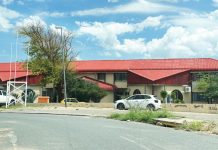By Mathias Haufiku and Tileni Mongudhi | 19 August 2020
MORE than N$51 million fisheries funds intended to uplift poor communities and to generate funds for the government to execute its social programmes is believed to have been potentially being squandered, stolen or diverted to individuals in the fishrot saga.
Government would allocate fishing quotas to the National Fishing Corporation (Fishcor), a portion of that quota is then reserved as a non-commercial quota, codenamed “Government Objective”.
Government issued non-commercial quotas totalling 143 000 metric tons between 2016 and 2018.
It now turns out that at least N$51,6 million paid into the trust accounts of two law firms – De Klerk, Horn and Coetzee (DHC) Incorporated and Sisa Namandje Incorporated – by Icelandic controlled fishing companies has raised further red flags surrounding the fishrot scandal.
The transfers into the accounts of the two law firms’ trust accounts are alleged to be possible kickbacks creamed off the top of money destined to the government through Fishcor.
At least three officials within the fisheries ministry explained that the government objective quota, previously known as non-commercial quota, was principally a vehicle through which the government generates income from the fishing sector to execute its social projects.
These include funding projects aimed at the upliftment of marginalised communities, rural development projects, funding war veterans projects and drought relief programmes.
The reference “Government Objective” features prominently on the trust account records of Sisa Namandje Inc and DHC Incorporated. At least N$51,6 million referenced ‘government objectives’ passed through the accounts of the two law firms’ in 2017.
The fisheries ministry has refused to explain or answer any questions seeking to clarify the ‘government objective’ riddle. Both ministry executive director Moses Maurihungirire and minister Albert Kawana have not responded to questions sent to them last month.
Fishcor was central to the government objective quota because it was its main custodian.
Fishcor received 53 000 metric tons of horse mackerel for the government objective quota in 2016; 88 000 metric tons in 2017 and 55 000 metric tons in 2018.
Since Fishcor did not have the capacity and infrastructure to catch horse mackerel, it offered the said allocation to its Icelandic partners Samherji through its subsidiary companies like Mermaria Seafood and Saga Seafood.

Fishcor entered into a sales agreement with Mermaria which caught the fish with its vessels. Samherji would then pay a Quota Usage Fee to Fishcor.
According to a 2016 usage fee agreement seen by The Namibian, Fishcor charged Mermaria Seafood Namibia a usage fee of N$3 200 per metric ton to exploit 10 000 metric tons of Fishcor’s horse mackerel quota.
Based on those figures, Mermaria would pay Fishcor N$32 million to exploit the quota that year.
According to The Namibian’s own calculations, at that rate, Fishcor was supposed to rake in at least N$458 million between 2016 and 2018 for the non-commercial quota.
However, industry sources familiar with the transaction said Fishcor would allegedly sell its quota usage fee to the Icelandics at below market value.
The suspicion is that the difference is diverted to be paid as kickbacks to the fishrot accused, who are facing court charges for allegedly pocketing money that Fishcor.
The Namibian has seen a few monthly quota usage fee agreements between Fischor and Icelandic controlled Mermaria Seafood Namibia between November 2015 and July 2016.
The agreement shows that during November 2015 Mermaria was paying N$3000 per metric ton, N$1800 during January 2016, N$3200 during June 2016 and N$1900 in July 2016.
The Namibian understands that despite the discrepancies in price, the Icelandic companies would allegedly always pay the full market value of about N$3200. The difference is then allegedly diverted and paid directly as kickbacks at the expense of Fishcor.
Fishcor’s former chairperson James Hatuikulipi, suspended CEO Mike Nghipunya and former cabinet ministers Bernhard Esau and Sacky Shanghala are currently in jail awaiting trial for allegedly acting in common purpose to obtain gratification of N$75.6 million on the pretext that such funds were meant for government objectives.
THE LAWYERS
Based on the testimony of Anti-Corruption Commission investigators during the ongoing fishrot court case, some of the stolen money ended up in the trust accounts of lawyers while a portion of it ended up being used as campaign funding for the ruling Swapo party.

Initially, the ACC particularly took keen interest in a N$17 million payment which was channelled through the Sisa Namamdje and Co firm, it was allegedly used to fund Swapo’s internal campaign.
The Namibian has further uncovered that at least an additional N$34.6 million has gone through the two law firms’ trust accounts under the guise of ‘Government Objective’.
The lion’s share of the money was paid into the De Klerk, Horn and Coetzee Incorporated’s trust accounts in four transactions amounting to N$29.6 million, while Sisa Namandje and Co received the remaining N$5 million.
Sources close to the investigations revealed that DHC Incorporated, trust account, received N$10,2 million from Mermaria seafood on 1 September 2017.
The next day the same amount was moved out of the DHC Inc trust account into De Klerk’s Celax Investment Number One. The law firm referenced the transfer as “Celax Gov Objective”.
On 16 August 2018 Saga Seafood – another Samherji subsidiary – paid N$8 million into DHC Inc’s trust account. It paid a further N$11,6 million into the same account on 14 November 2018.
The two payments were paid into the Celax Investment account in five tranches between 17 August 2018 and 16 November 2018. The Five transactions were all referenced “Celax Gov Objective”.
On 28 August 2017, N$5 million was paid into the Sisa Namandje and Co Trust Account and was referenced as ‘Government Objective’. This excludes the N$17,5 million that was paid into the law firm’s accounts by Fishcor.
While concerned officials in the fisheries ministry were anxious to reposition the ministry in the midst of an ongoing probe, many are of the view that the process of clearing the image of the ministry would require systemic changes and reshuffling of senior officials within the ministry.
ICELANDIC FREEZE
In April this year, The Namibian approached Samherji to explain what the N$5 million paid into the Sisa Namandje and Co Inc trust account on 28 August 2017 by one of its Namibian companies was for and who the final beneficiaries were.

Co-CEO of Samherji Björgólfur Jóhannsson refused to explain the payment because they have launched an investigation into allegations regarding the operations in Namibia.
Samherji, according to Jóhannsson, engaged international law firm Wikborg Rein in Norway to assist with the investigation.
He said Wikborg Rein’s work is carried out independently and all facts presented to the firm are verified separately.
“A key focus has been to map all payments made concerning the group’s operations in Namibia. Until Wikborg Rein’s work is finished and the investigation is finalized, we are unable to comment on specific transactions,” he said.
* This article was produced by The Namibian’s Investigative Unit. Send us tips via your secure email to investigations@namibian.com.na.






